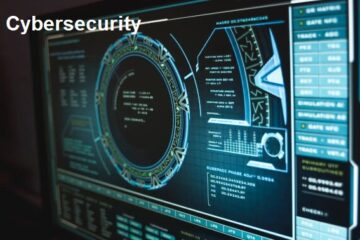Technology has been evolving at an unprecedented pace in recent years, and it’s hard to predict what the future holds. However, we can take a glimpse into the crystal ball and speculate about some of the exciting technological innovations that are likely to shape our lives in 2023.
From virtual reality to artificial intelligence, this blog post will explore some of the most transformative technology trends that have potential far beyond just entertainment or convenience. So buckle up and get ready for a thrilling ride into the world of tomorrow.
Virtual Reality
Virtual reality (VR) technology has been around for a while, but it’s still in its infancy stage. However, the potential of VR is enormous and could transform various aspects of our lives in 2023. For starters, virtual reality can make education more engaging and interactive by providing immersive experiences that simulate real-world scenarios.
Moreover, VR can revolutionize the gaming industry by offering players a truly extraordinary experience that feels like they are part of the game world. It also has immense therapeutic value as it can create simulations to help treat medical conditions such as phobias and PTSD.
Additionally, virtual reality can be used for remote work collaboration where teams from different parts of the world can meet up virtually to discuss projects or brainstorm ideas. The use cases for virtual reality are endless and will only continue to expand with innovative technological advancements.
Virtual Reality is poised to become one of the most transformative technologies in our daily lives over the next few years.
Augmented Reality
Augmented Reality (AR) has been a buzzword for a few years now, and it’s not hard to see why. AR technology is transforming the way we interact with our environment by overlaying digital information with the real world.
In 2023, AR will become much more prevalent in everyday life. For instance, imagine walking down the street and seeing virtual signs hovering in front of shops that provide all sorts of information about their products or services. Or picture going on vacation and using your phone’s camera to identify plants or animals while exploring nature.
One industry where AR is already having an impact in gaming. With games such as Pokemon Go being huge successes, it’s clear that people enjoy interacting with digital creatures overlaid onto the physical world around them.
But AR isn’t just for fun; it can also be used in education, medicine, and even architecture. Medical professionals can use AR to view detailed medical images during surgeries or procedures without having to look away from their patients.
The potential uses for augmented reality are vast and varied, making it one of the most exciting technological trends shaping our lives in 2023.
Artificial Intelligence
Artificial Intelligence (AI) is one of the most talked-about technology trends today. AI has been changing our lives in many ways, from improving healthcare to enhancing customer service experiences. In 2023, we can expect AI technologies to become even more advanced and widespread.
One area where AI will make significant strides is in autonomous vehicles. These self-driving cars will be able to navigate roads and highways without human intervention, potentially making transportation safer and more efficient.
Another field that will benefit from advancements in AI is medicine. Doctors are already using machine learning algorithms to diagnose diseases and develop personalized treatment plans for patients. With further developments, doctors may soon be able to predict disease outbreaks before they occur.
AI-powered chatbots are also becoming increasingly popular among businesses looking to improve their customer support services. Chatbots can answer frequently asked questions quickly and accurately, freeing up customer service agents’ time for more complex inquiries.
Of course, with all these new advancements come concerns about job displacement and privacy issues related to data collection by machines. It’s important that we address these challenges proactively as we continue down the path of integrating AI into our daily lives.
Hyperloop
Hyperloop is a futuristic transportation system that has been captivating the interest of many people for a while now. This revolutionary mode of transport is designed to be incredibly fast, efficient, and sustainable. It works by propelling passenger pods through vacuum-sealed tubes at speeds exceeding 700 miles per hour.
The potential benefits of Hyperloop are numerous. For instance, it could drastically reduce travel time between cities, making long-distance commuting much more feasible and convenient. Furthermore, this new technology would have far-reaching implications for logistics and supply chains as goods could be transported across vast distances in an instant.
One of the most exciting aspects of Hyperloop is its eco-friendliness – it is powered by renewable energy sources such as solar power or wind turbines. Moreover, it produces no carbon emissions whatsoever which makes it a viable solution to combat climate change.
However, despite all these advantages, there are still some challenges that need to be overcome before Hyperloop can become mainstream. One major challenge is building the necessary infrastructure required for this type of transportation system.
There’s no denying that Hyperloop represents one of the most significant technological advancements in recent years with potentially transformative impacts on our lives in 2023 and beyond!
The Rise of the Chatbot
As we enter 2023, chatbots are becoming more prevalent than ever before. These conversational agents allow businesses to provide real-time assistance and support to their customers, without the need for human intervention.
One of the biggest advantages of chatbots is that they can be available 24/7, providing uninterrupted service and support. This means that companies can operate around the clock, reaching out to customers at any time of day or night.
Chatbots have also become highly sophisticated over the years. Thanks to advancements in natural language processing (NLP) technology, these bots can understand complex phrases and respond with appropriate answers.
Moreover, chatbots are being used not just for customer service but for marketing purposes as well. They help businesses gather valuable data about their users’ preferences and behaviors which can then be used to tailor marketing campaigns accordingly.
With all these benefits in mind, it’s no wonder why chatbot adoption is rising rapidly across industries. As we move into a more connected future where convenience reigns supreme; you can expect even more personalized experiences from your favorite brands with the help of powerful AI-powered assistants like Chatbots!
Conclusion
As we move toward the future, technology continues to advance at a rapid pace. It’s fascinating to see how these advancements will shape our daily lives in 2023 and beyond. Virtual reality, augmented reality, artificial intelligence, hyperloop, and chatbots are just some of the technologies that we can expect to become more prevalent in the coming years.
Virtual and augmented reality will transform how we experience entertainment and even education. Artificial intelligence will enable us to automate tedious tasks while improving accuracy. Hyperloop promises faster transportation that could change how people commute or travel long distances.



